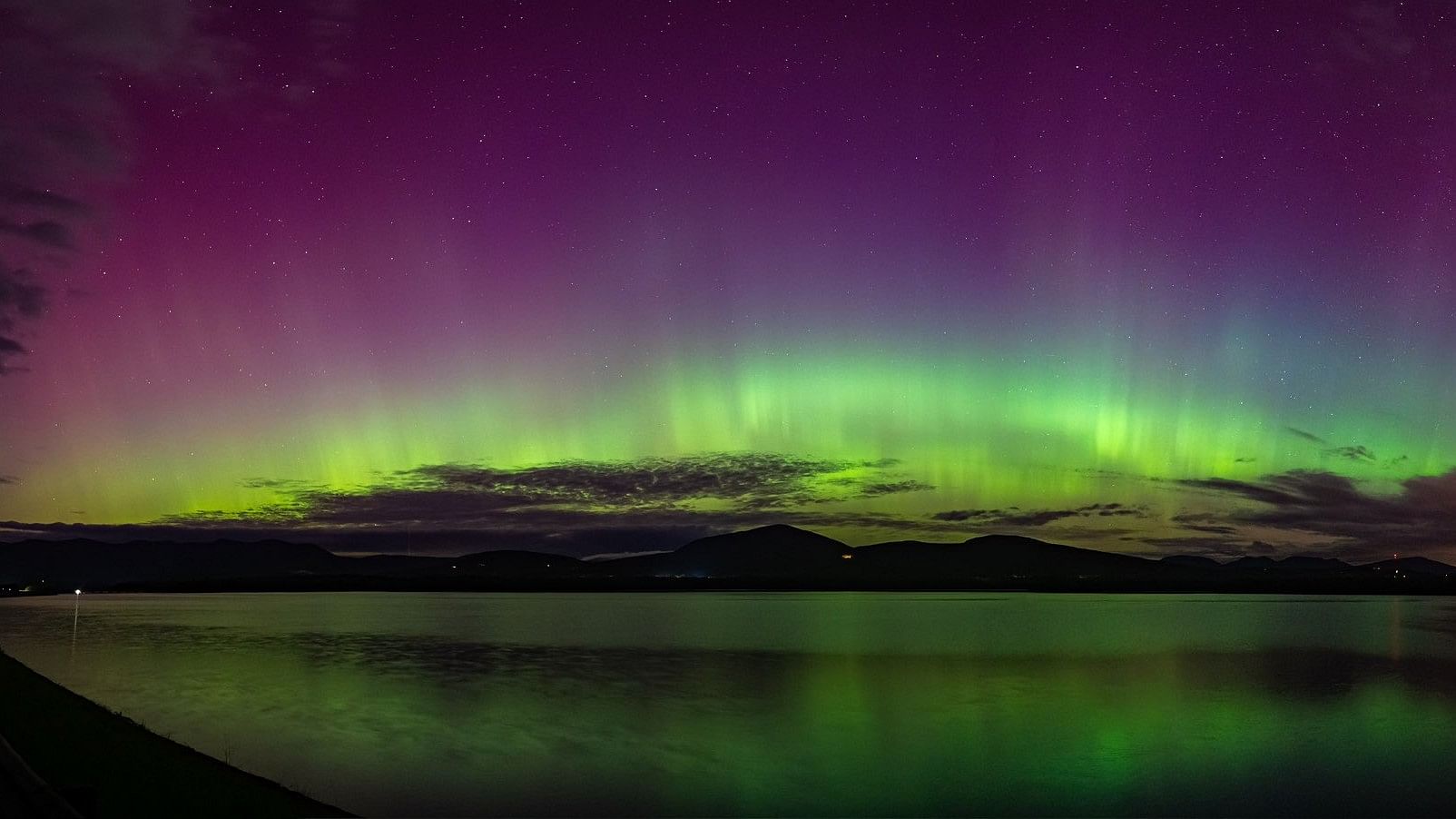
Northern Lights entrances viewers in New York Area.
Credit: X/@DanTVusa
As a girl in Michigan, Gabriela Aguilar sometimes went looking for the northern lights in the state's Upper Peninsula. But it wasn't until Thursday night, when she climbed to the roof of her apartment building in Harlem, that she finally saw them.
"I'm just shocked that it took my entire life to be able to see it," said Aguilar, 37, who stood with her dog, Gomez, and watched the sky turn pink, purple and green until the autumn chill drove her back inside. "And -- of all places -- seeing it in New York City!"
New Yorkers were treated to a rare light show Thursday night as the aurora borealis, also known as the northern lights, spread an ethereal smear across the sky. On social media, people as far south as Washington, D.C., and Kentucky reported seeing the lights, which in pictures seemed to vary in color and intensity from neon pink to a subtle hazy purple.
Udi Ofer, a professor of public affairs at Princeton University, was at home shortly after dusk when a neighbor texted to alert him to the sky. He rushed to his backyard in Princeton, New Jersey, with his 9-year-old daughter and 4-year-old son.
For about 20 minutes, they watched stripes of pink and purple as the stars began to come out.
"I think the thing that's most remarkable about it are the streaks of light, which I just didn't expect," Ofer, 49, said. He called them "pretty magical."
The facts behind the event are nearly as spectacular as the sight of New York City's night sky streaked with pink. The lights started with a "severe" geomagnetic storm, the result of a "fast coronal mass ejection" of plasma from the sun Tuesday night, according to the Space Weather Prediction Center.
The charged particles raced through space at 1.5 million mph and reached Earth at 11:15 a.m., the center found. The event brought enough energy coursing through space to possibly disrupt satellites in orbit and power systems on Earth, the center warned.
New York City's Emergency Management Department said there could be possible disruptions to electricity, GPS and communications systems, but suggested there was little need for the public to be concerned.
At the National Weather Station center in Upton, New York, on Long Island, meteorologist Bill Goodman took a break from his monitors and screens Thursday night to go outside and look up.
"We got a pretty cool picture of that behind our Doppler radar," he said, describing a picture taken from the center's campus and posted on the social platform X. It was the second severe solar storm of the year to cause extended aurora borealis on Earth, "but this time we lucked out because we had clear skies across the entire New York City area," Goodman said.
"To get them here to the New York metro area is pretty rare," said David Robinson, New Jersey's state meteorologist, who saw some vestiges of the lights from the second-story window of his house near Princeton on Thursday night.
Anna Kathryn Barry, a lawyer, heard on her commute home from Washington that the northern lights might appear over the region.
She doubted that she would actually see it. But, at about 7:20 p.m., she headed out to her deck in Herndon, Virginia. Sure enough, she could see the northern lights.
"At first, it looked like purple clouds almost," Barry, 32, said, adding, "then it started to get richer in color."
The light show lasted about 15 minutes before slowly fading away, Barry said.
The lights may return Friday night because the stream of charged particles is continuing, Goodman said, and New York's skies will remain clear.
The area's next big aerial show will be the Tsuchinshan-ATLAS comet, which will rival the brightness of Jupiter starting this week. To find it, scout out the darkest location available with an open view of the western horizon, looking low in the evening sky, near where the sun has set.